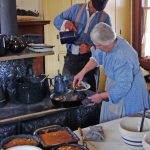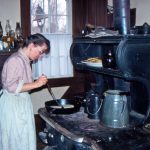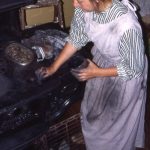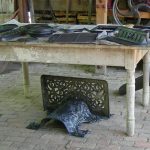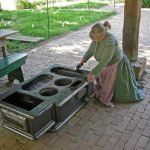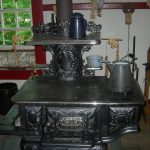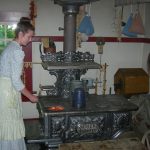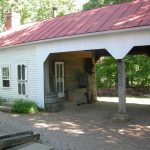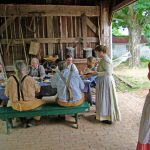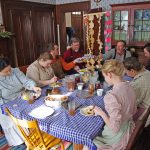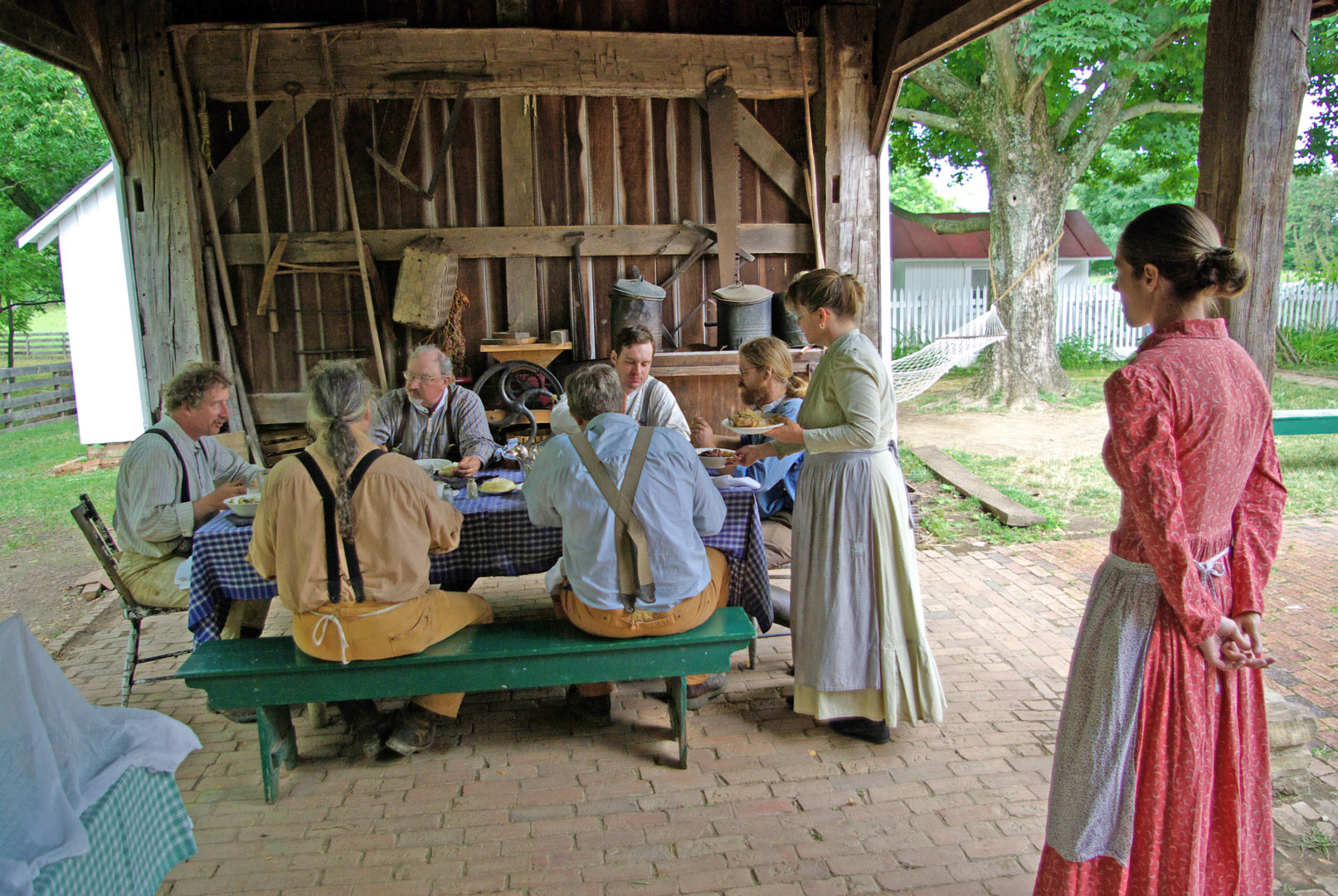
The warm weather is here in earnest and many people may have already turned on their air conditioners, but in the 1880s families had to find other ways to beat the heat. At Slate Run Living Historical Farm, we face the same issues today, arising from the great heat generated by cooking on a cast iron wood burning cookstove. Since Ohio summers were often hot and muggy, many families built separate kitchens to keep the cookstove’s constant heat out of the main house.
The stove is in daily use at the farm for cooking meals as well as canning and preserving the soon to be bountiful harvest from the garden. It helps to keep the farmhouse warm in winter, but the heat would be overbearing in summer. So to keep the farmhouse cool in the hot season, the stove is moved out into the summer kitchen. As part of the twice-yearly ritual, the stove is taken apart, cleaned and blacked to refresh the appearance and prevent rust.
The large covered area next to the summer kitchen, with its protection from the weather, made a good place for hanging laundry, soap making, chopping wood and pressing cider. Close to the house, the woodshed kept the wood supply organized and dry.
There is always something interesting for visitors to see at Slate Run Living Historical Farm. Witness the routines of daily life carried out with the tools, equipment and methods used before the introduction of electricity or gasoline engines, and all by staff and volunteers in 19th-century costume. The activities change with the day and the season because this is a working farm.
Much of the work of farm life in the 1880s was monotonous and repetitive. Life, for the family who lived here, was a series of chores dictated by the seasons and weather. The family worked hard to raise livestock and crops, for home use as well as for sale, to enable them to buy an ever increasing number of manufactured goods.
The crops, fruits and vegetables grown at the farm are heirloom varieties common in the late nineteenth century. The types and breeds of livestock we keep are typical of those found on a Central Ohio farm of the era. Cattle, hogs and poultry are raised for milk products, meat and eggs. The surplus is sold for cash, just as it would have been in the 1880s.
Draft horses, human muscle and the wind are the primary sources of working energy. In the farmhouse, food is prepared and preserved on the wood-burning cookstove, clothes are made and repaired on the treadle sewing machine and kerosene lamps light the house.
- Farm staff in the farmhouse kitchen. (Frank Kozarich)
- Cooking on the wood burning cookstove inside the farmhouse. (Slate Run Farm staff)
- Staff clean and black the cast iron cookstove before moving it to the summer kitchen. (David Trotter)
- Dismantled parts of the stove for cleaning. (David Trotter)
- Staff member cleans and blacks the upper part of the cast iron wood burning cookstove in the eaves of the summer kitchen. (David Trotter)
- Slate Run Farm’s cast iron wood burning stove, in the summer kitchen. (David Trotter)
- Stove in use in the summer kitchen. (David Trotter)
- The summer kitchen and the open ended eaves. (David Trotter)
- Farm staff enjoy lunch in the eaves of the summer kitchen. (Frank Kozarich)
- Farm staff share a meal in the farmhouse dining room. (Frank Kozarich)

